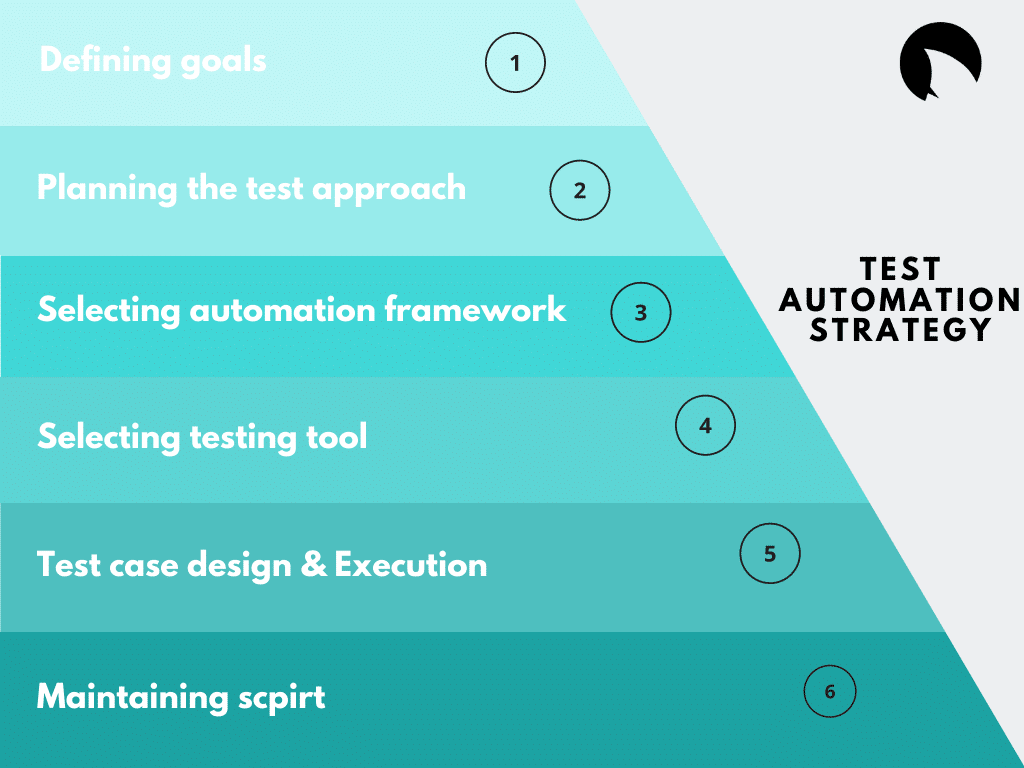Last year we had a pretty complicated project, that required 6 releases per day. And that’s why we decided to share our experience and give some useful advice. Want faster software release cycles? Looking to speed up your testing projects? Read our post on how to automate testing to ensure 6 daily releases.
It is careless and unethical to deploy software without first assessing it. Though testing is said to take up about half of the time spent on the software development cycle, it remains a vital part of the development process and should not be dismissed. The three main objectives of software testing are to find errors in code, debug the (potential) errors or bugs found in code, and ensure stability and consistency.
The ultimate goal of software testing is to improve the reliability of the software created by identifying and fixing defects when they arise and querying for potential defects and vulnerabilities. When doing so, be careful not to devote too much time to tasks that can be completed using automation or replicated. Data from Infoworld indicates that seventy-two percent of enterprises now automate testing. Saving time, energy, and resources during software testing is just as critical as doing the same during the software development cycle.
Here at KITRUM, we’ve been developing testing solutions since 2014 to ensure speed, relevancy, and recency. Due to the dynamic and demanding nature of the software and tech industry, new features and functionality must be introduced to consumers as soon as possible. You could lose thousands of dollars for every minute wasted or for being outdated. In this post, we’ll draw on our collective experience to demonstrate how QA teams can build an automated testing strategy and ensure continuous software release.
What is Automated Testing?
Automated testing is a software testing method that performs the same functions as manual testing but with increased effectiveness. This testing technique is becoming increasingly popular in product development procedures. As seen on GMI’s report, the automation testing market surpassed 14 billion dollars in 2019 and is projected to rise at a CAGR of more than 15% between 2020 and 2026. The reasons for the growing adoption are not far-fetched.
Automation increases the accuracy and quality of testing. Through automated testing, QA professionals can run several small rests concurrently without intruding or slowing down the development process. Test automation also uses predefined tools to improve the reliability of the software testing process, yielding quality outcomes and resulting in a higher return on investment (ROI). The benefit of automated testing is that software suites can be saved, duplicated, and reused, a capability that was previously unavailable in manual software testing.
Functions of automated testing include:
- Creating a series of tests that can be used repeatedly.
- Minimizing the cost of end-to-end testing by detecting bugs earlier.
- Enabling regular coverage of tests throughout the development pipeline.
- Establishing an enabling environment for simultaneous testing.
- Speeding up the product development process.
What is Automated Testing Strategy?
Automated testing strategy defines the entire testing process adopted by a test team from the planning stage to report and implementation. All of the procedures are defined and clearly stated to reflect the test needs and expectations within a given timeline. Automation necessitates developing a clear test strategy for teams to achieve optimal results; otherwise, test resources could go to waste.
There are important factors to consider in choosing an automation testing strategy; these include:
1. Project type: the project or software intended to be tested determines the entire test strategy and, as such, should be the first point of consideration. Testing an eCommerce website would entail a slightly different test strategy from testing a Saas application.
2. Test Setting: The test setting is as important as the test procedure. Test setting should be conducive enough to carry out the entire procedure. QA analysts and testers must inspect the test setting and ensure that all the needed tools and support systems are available.
- Testing Procedure: The process usually involves initiation, planning, implementation, reporting, and closing. This is often referred to as the technical aspect of testing and reflects the test team philosophy.
- Testing Tools: There are many tools and test frameworks in the industry, and as such, waiting until the test properly begins to decide on a tool or set of tools can be confusing and time-consuming. Ideally, a tester should have done every necessary research and review on the tools while at the prep stage. This would enable an informed position while selecting or choosing tools to work with.
How to Build Automated Testing Strategy

Below is an example of how teams can create an automated strategy
- Identify cases for automation
Not every test case can be automated; hence test professionals must identify and differentiate cases that can be automated. This would help to work more efficiently and save time.
Here are a few tips that can help you identify test cases that may be automated.
- Intention to function on multiple operating systems or processors: automated tools can simulate different OS and processors to check compatibility and efficiency. Rather than testing manually and using different configurations per time, you can simply deploy tools that would automate the entire process and testing against multiple operating systems.
- Multiple or large data entry: some data tools or frameworks can help to automate data entry. These tools would save time and lessen the occurrence of errors.
- UI UX analysis: frontend testing seems to have the most attention from test tools developers. There are a myriad of front-end automated test tools that offer different functionalities.
More cases can be automated. However, they may be subjective. It’s best to analyze your test responsibility and identify more cases that can be automated.
- Employ test automation professionals
The industry is filled with self-acclaimed professionals who talk more than they know. You have to be careful so that you do not end up in the wrong hands. In choosing a tester, you need to hire someone who can use multiple tools, understands the nitty-gritty of testing, and can assess whether to automate or not. So, it would be best if you were specific while hiring.
- Choose the appropriate tool
With the options available in the market, selecting the right tool might become a confusing adventure. To avoid the wasteful process of trying out different tools, read reviews or seek the professional opinion of experienced testers. Your tools should enhance the process and not limit it. Complexity, technical feasibility, application stability, and reusability of the scripts affect the choice of tools.
- Create a framework for test automation
Ensure your framework is scalable. That way, it can be a template for test automation procedures, guidelines, and principles, and different types of automated testing.
- Ensure strict compliance with the plan
It is one thing to have a great pan; it is another to stick to it. While most teams are great planners, they fail at sticking to the plan causing avoidable errors and missing deadlines. Apart from creating a comprehensive platform, it would help if you made your testing team abide by it. Improve their expertise, improve communication in the team, update them on requirements and get updates from them regularly.
- Break down the Process
After setting up the testing environment, you need to develop an elaborate execution automation testing plan and then break it down into meaningful and executable bits. This way, you can take on daily or short-time-based tasks that would culminate into a big success.
- Develop test scripts
Test scripts are the vehicle for most automation testing. Without them, most automated test processes would be error-prone.
- Reporting
Here the QA needs to record the insights and report in a readable and concise document to assist developers in improving the product.
- Script maintenance automated testing strategy
This step is important to ensure that your scripts do not end up stale and dormant.
4 Important Rules to Speed Up and Not Cut Corners
One of the major concerns of production engineers is how to speed up production processes and create quality products.
With the increasing demand and competition in the industry, a little delay can be detrimental and should be avoided. Usually, speeding up is linked to cutting corners or shabby production processes. But it is not necessarily true. Speed and quality products are not mutually exclusive.
Here are four important rules that will help you speed up your production processes without cutting corners. So, sit back and read.
- Analyze requirements
The cost of fixing bugs found during the requirement phase is way smaller than fixing bugs found during the testing phase. So, it would be best if you carried out a requirement analysis with your team. Inform them of what to look out for and the best practices to get the entire team on the same page.
- Use static code analysis, code reviews, and vulnerability scanners
To ensure excellent quality, you need to invest in tools and processes that will help in preventing defects or identify defects earlier in the production process. You can use platforms and tools to continually inspect code quality to carry out automatic reviews with static code analysis to discover security vulnerabilities, bugs, and code smells. These strategies will help detect tricky bugs, combat vague behavior, repair security vulnerabilities, and make the codebase clean and maintainable.
- Write unit tests
It is preferable to spend more time reading code than writing it because you must understand the functions of the current code before writing the new one. Unit testing provides developers with a mechanism for writing self-documenting code, improving software quality, and detecting problems earlier. You should also make writing unit tests for newsprint characteristics a habit and incorporate it into the definition of “done.” To visualize the process of increasing your coverage, you should also set quality gates on the unit test coverage for new functionalities.
- Automate only the relevant procedures and reexamine
Not every test case can be automated, and sometimes in certain scenarios, Automated testing results are not always 100% accurate or meaningful. Results from automated testing may fall short of reality hence the need to closely examine the results obtained for accuracy before passing a vote of confidence. This re-examination may reveal where the failure occurred in the test and how to fix it. In addition to automating the most important procedure, you need to train others in the process of automated testing. Why?
Usually, people are not adept at testing their codes. Therefore, they need an additional set of eyes to ensure the code is working and has no defects.
Also, you need to note that you have to be good at manual testing to succeed in test automation. Hence, it’s good practice to train your team on what to test, how to test, how to automate, and what to automate.
How Your Team Can Implement Auto-testing Effectively
The build-up to any test process is as important as the proper procedure; as a team, it is important to get the test strategy and process right from the onset. It’s teamwork, and so every member of the team should be involved in the entire process from planning to report. Of course, the individual task would be assigned, but team players must collaborate even while working independently.
People will only excel at their assigned task if they understand the entire test demand and expected result. Here is how you can help your team become efficient.
- Training is Important
Training and retraining help the team stay relevant and updated on automatic test best practices. Training should be before any new test project because not all tests are the same or require the same skill or knowledge.
- Assign duties
While everyone works towards achieving a successful outcome, the process should be divided and assigned to team members. That way, everyone takes responsibility for the test process. Roles should be assigned according to skills and abilities.
- Adopt the Agile system
The Agile system is quite popular amongst teams and organizations as it helps to enhance efficiency and delivery. Agile is a project management methodology that encourages and enhances communication, feedback, documentation, and positive flexibility. As of early 2018, 91% of respondents said their company used the Agile Methodology, while 88% used continuous integration. Since then, the adoption rate has remained consistent, with approximately 71 percent of businesses leveraging Agile practices.
- Implement CI/CD
CI/CD stands for continuous integration and continuous delivery. Continuous integration is an automated solution that enables multiple developers to contribute to a project and track changes in a code repository. CI makes it easier to detect error codes or bugs.
- Track and Report Progress
The best way to do this is by automation. Already many tools offer the feature of automatically recording, compiling, and reporting progress. Integrate any of such tools into your test suite and encourage members to utilize them. Automated tracking tools are independent and can hardly be altered.
Conclusion
Execs and company leaders who see the usefulness of automated testing and commit resources and effort to manage its implementation routinely outperform their rivals. According to a survey, seventy percent of businesses that utilized an organized strategy did better than their competitors. A strategy is important since it enables companies to measure the strength of their testing activities and their ability to expand. More specifically, it is critical to outsource testing projects to teams with a forward-thinking vision capable of aligning the business, product, and users.
If you’re tired of slow development cycles that result in incompetent software and want to ensure that all deliverables are covered quickly and completely, contact us. We will develop and implement an automated testing strategy consistent with your existing methods while remaining non-intrusive to developers.
Below are the typical tests and stages we automate.
- Development stage
- Production stage
- Embedded system tests
- Regression tests
- DevOps







